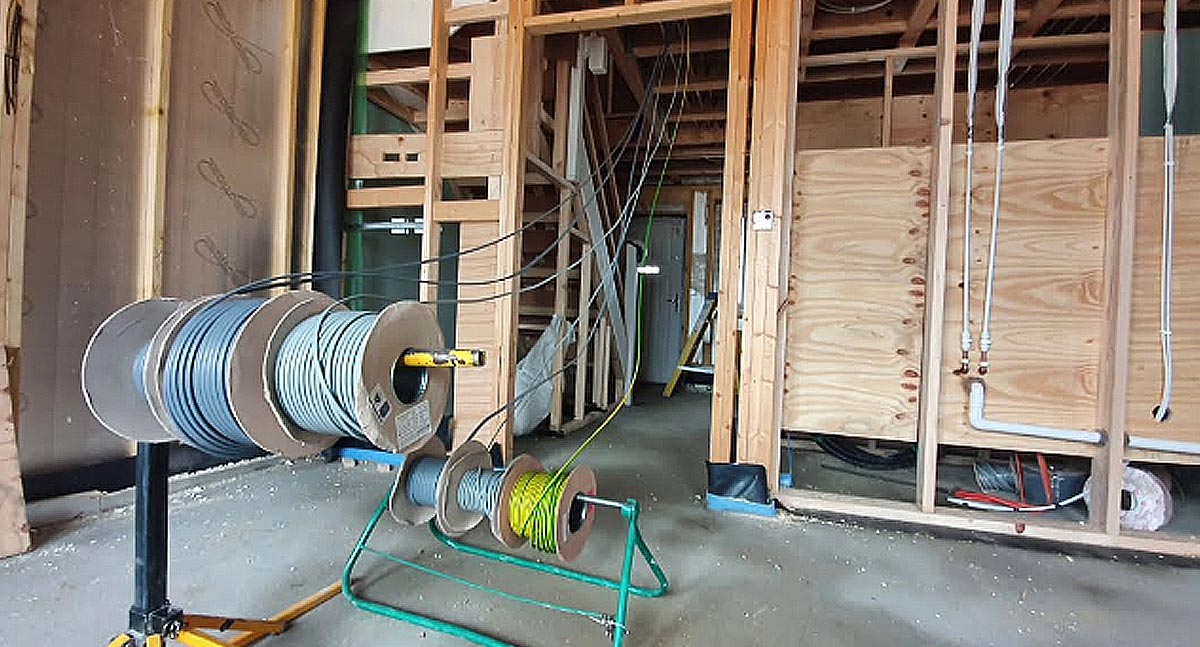Debunking Electric Installment: Comprehending Codes and Regulations for a Legal and Safe Setup
In the realm of electric setup, adherence to codes and regulations is vital to guarantee both validity and security. The trip to demystifying electric installation goes beyond plain experience with laws; it requires an extensive understanding of just how to carry out safe electrical techniques efficiently.
Relevance of Electrical Codes
The adherence to electrical codes is crucial in making certain the safety and dependability of electric setups. Electric codes function as a set of requirements and standards that dictate the appropriate style, installment, and maintenance of electrical systems. These codes are developed to decrease the danger of electrical threats, fires, and various other safety worries that may develop from damaged electrical job.

Additionally, electric codes are consistently updated to incorporate brand-new innovations, best techniques, and precaution. Remaining updated with these codes is essential for specialists in the electrical sector to guarantee that their job satisfies the most recent safety and security requirements. Inevitably, the value of electrical codes hinges on developing a safe and efficient electric infrastructure that profits both individuals and neighborhoods.
Key Laws for Safety And Security
A number of fundamental guidelines govern the security standards in electrical installments. One key guideline is the National Electric Code (NEC), which offers standards for safe electrical style, installation, and assessment to protect people and building from electrical dangers. The NEC covers facets such as wiring techniques, grounding, overcurrent defense, and tools installation to guarantee a secure electric system.
Another vital law is the Occupational Safety and Health And Wellness Management (OSHA) criteria, which concentrate on the safety of workers associated with electrical setups (BRE Electrical). OSHA laws consist of needs for correct training, safety treatments, and individual protective devices to avoid work environment crashes and injuries
In Addition, the International Electrotechnical Commission (IEC) standards aim to harmonize electrical installation laws on an international scale. These criteria address issues like electric devices security, electro-magnetic compatibility, and power efficiency to promote uniformity and safety in electrical installments worldwide.
Compliance with these essential guidelines is important to ensure the security and validity of electric setups, protecting both individuals and residential property from the dangers connected with electricity.
Recognizing National Electric Code
Trick policies such as the National here are the findings Electrical Code (NEC) supply necessary standards for risk-free electric layout, setup, and inspection to guarantee the protection of people and building from electrical risks. The NEC, likewise called NFPA 70, is a comprehensive set of requirements for why not find out more electric installments that are updated every three years. It is created by the National Fire Protection Association (NFPA) and is commonly adopted across the USA.
The NEC covers various facets of electrical work, consisting of wiring techniques, grounding, overcurrent security, and equipment setup. It intends to safeguard people and property by attending to possible risks connected with electric systems. Conformity with the NEC is usually applied by local authorities having jurisdiction (AHJs), such as constructing code authorities and inspectors.
Comprehending the NEC is vital for electric professionals, designers, and examiners to make certain that installments meet the required security demands. By sticking to the NEC standards, specialists can aid prevent electrical accidents and guarantee the dependability of electric systems in property, business, and commercial setups.

Conformity With Regional Building Regulations
Understanding and adhering to neighborhood building codes is vital for ensuring the security and conformity of electric installations within a certain territory. These codes describe details requirements for electrical setups, such as the kind of circuitry to be used, placement of outlets, basing approaches, and load capacities.
When it pertains to electric installments, failure to adhere to neighborhood building regulations can cause severe effects. Non-compliant installations may position security dangers, raise the threat of electric fires, and lead to costly fines or legal concerns. In addition, insurance provider may refuse to cover damages resulting from installations that do not meet local building regulations needs. Therefore, it is crucial for electrical experts and service providers to stay informed about and purely stick to the neighborhood structure codes suitable to their jobs.
Guaranteeing Safe Electrical Practices
Exercising stringent adherence to developed security protocols is crucial in the area of electrical installments to alleviate potential threats and make sure the well-being of people and buildings. Security in electrical work incorporates different facets, starting with the correct training of personnel associated with installment, maintenance, navigate to this site and repair. It is necessary to follow producer directions thoroughly when handling electric elements and tools. Before starting any type of work, it is critical to conduct an extensive threat analysis to identify potential dangers and implement preventive measures. Using individual protective devices (PPE) such as shielded handwear covers, safety glasses, and non-conductive shoes is non-negotiable to guard against electric shocks and arc flashes. Routine devices examinations, testing, and maintenance routines are crucial to spot and remedy mistakes prior to they rise into safety risks. Moreover, adherence to correct lockout-tagout treatments throughout upkeep activities is essential to avoid unintentional energization of circuits. By focusing on secure techniques, electric installments can operate successfully while reducing the possibility of mishaps or damage.
Final Thought
To conclude, adherence to electrical codes and laws is vital for guaranteeing the safety and validity of electrical installments. Comprehending the National Electric Code and compliance with local building regulations are vital for a safe arrangement. By complying with these standards and practicing secure electrical techniques, individuals can protect against prospective hazards and make sure the proper performance of their electrical systems.